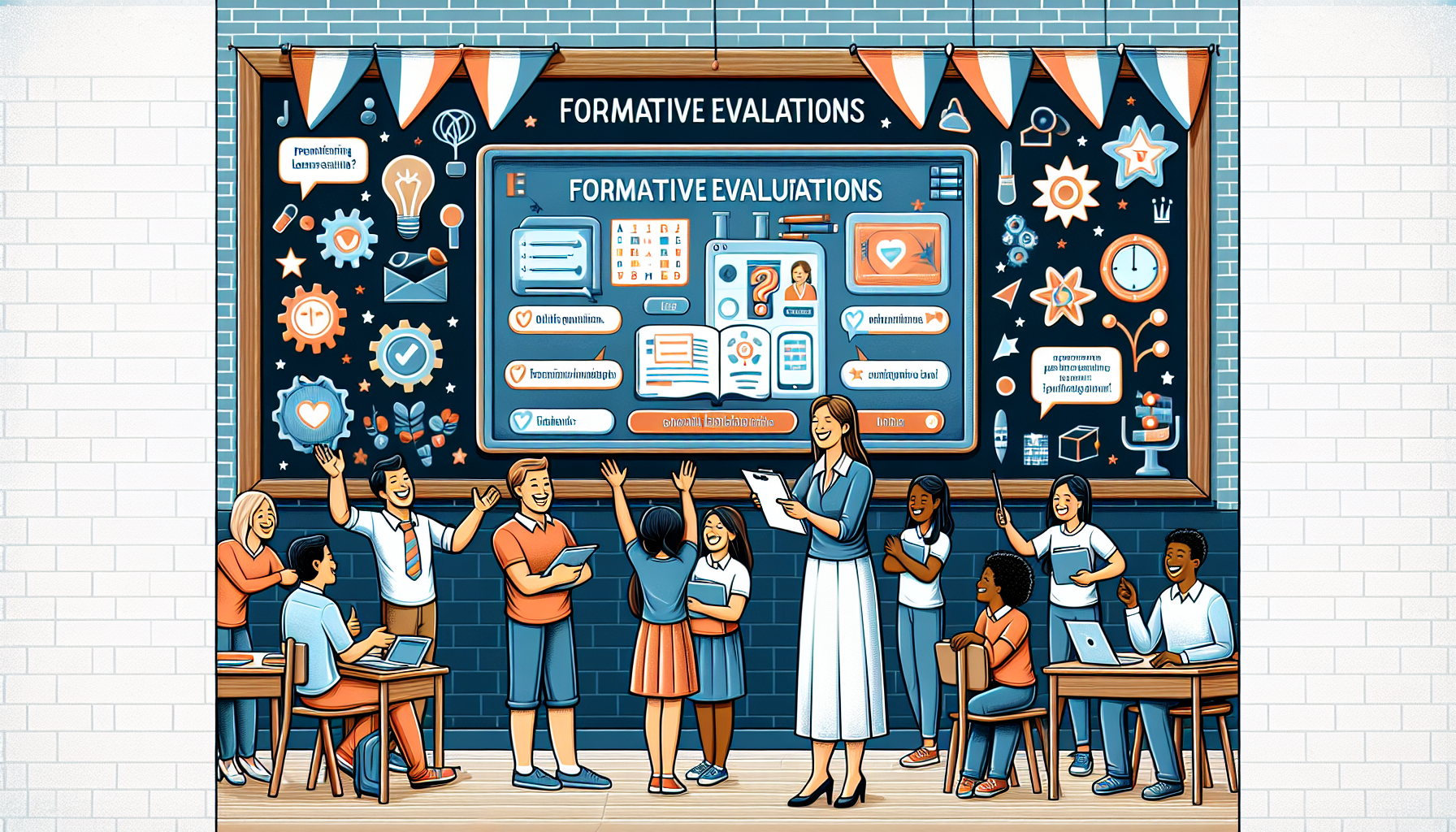Navigating the world of blended learning can feel like a juggling act, especially when you’re trying to assess student progress effectively. It’s totally understandable if you’re feeling a bit overwhelmed by how to integrate formative assessments into this hybrid approach. After all, you want to ensure that your students are learning while also making the best use of your time and resources.
But don’t worry! Stick with me, and I’ll share some straightforward strategies to make formative assessments work for you in a blended learning environment. You’ll discover practical tools and methods that can lighten your load while boosting student engagement and understanding.
We’ll dive into everything from the types of formative assessments that fit well into blended learning to ways of analyzing results and adapting your teaching. It’s time to transform the way you assess and support your students!
Key Takeaways
- Formative assessments provide real-time feedback to help adjust teaching strategies in blended learning.
- These assessments quickly identify learning gaps, allowing for timely support and boosting student confidence.
- Various assessment types include quizzes, discussion boards, peer reviews, exit tickets, and interactive polls.
- Set clear learning objectives and communicate the purpose of assessments to enhance student engagement.
- Use tools like Google Forms and Kahoot to streamline the assessment process and track progress effectively.
- Analyze results for overall trends and adapt teaching methods based on student feedback.

Understanding Formative Assessments in Blended Learning
Formative assessments are all about gauging student understanding as learning unfolds.
In a blended learning environment, which combines online and face-to-face instruction, these assessments provide real-time feedback that helps teachers adjust their teaching strategies.
Think of them as check-ins to see how your students are doing before it’s time for the big tests.
Tools like quizzes, discussions, and polls can make this process smooth and engaging.
The beauty of formative assessments lies in their flexibility; they can happen spontaneously during lessons or be part of structured activities.
Benefits of Using Formative Assessments
So, why should you incorporate formative assessments into your blended learning approach? For starters, they help identify learning gaps quickly.
Rather than waiting for a final exam to figure out who’s struggling, you can address issues as they arise.
This proactive measure not only boosts students’ confidence but also enhances their learning experience.
Additionally, formative assessments foster a sense of community in the classroom.
They encourage student participation and discussion, making learners feel more connected and invested in their education.
Plus, when students see their progress through regular feedback, it promotes a growth mindset.
Types of Formative Assessments for Blended Learning
When it comes to formative assessments, variety is your friend.
Here are some types you can easily integrate into your blended learning environment:
- Quick quizzes: These can be administered online or in person to check comprehension.
- Discussion boards: Encourage students to engage with each other asynchronously.
- Peer reviews: Have students give feedback on each other’s work to promote collaboration.
- Exit tickets: Ask students to summarize what they’ve learned at the end of a class.
- Interactive polls: Use tools like Kahoot or Mentimeter for instant feedback.
Choosing a mix of these methods can keep the assessments fresh and engaging.
How to Implement Formative Assessments in Blended Learning
Implementing formative assessments doesn’t have to be complicated.
Start by identifying clear learning objectives for your lessons.
This gives you a framework to design assessments that align with what you want students to learn.
Next, decide on the types of formative assessments you’ll use and when to incorporate them.
Consider combining different formats to capture various aspects of student understanding.
It’s also crucial to communicate with your students about the purpose of these assessments.
When they understand why they’re being assessed, they’re more likely to engage sincerely with the process.
Finally, analyze the results promptly and use that data to make immediate adjustments to your teaching approach.

Tools for Conducting Formative Assessments
Using the right tools can make formative assessments smoother and more effective.
Online platforms like Google Forms allow you to create customized quizzes that students can take at their own pace.
You can quickly review responses and gain insights into student understanding.
Another great option is interactive platforms like Kahoot, which gamify assessments, making them lively and engaging.
Furthermore, discussion tools such as Padlet or Slack can facilitate ongoing conversations and feedback in a collaborative space.
Don’t forget about tools for tracking progress; learning management systems (LMS) often provide analytics to see trends in student performance.
Be sure to explore the features of these tools to find the best fit for your classroom needs.
Analyzing Results from Formative Assessments
Once you’ve conducted formative assessments, the next step is analyzing the results.
Start by looking at overall trends instead of focusing on individual performance to get a broad picture.
Are many students struggling with a specific concept? This signals you might want to revisit that topic.
Utilize tools that aggregate data, enabling you to spot patterns and areas of improvement.
For instance, creating visual representations such as graphs can make data interpretation easier and more impactful.
Consider holding brief reflection sessions with students to discuss their own results and feelings about their progress.
This helps them take ownership of their learning while providing you with valuable insights about your teaching effectiveness.
Adapting Teaching Based on Assessment Feedback
Feedback is only as good as the changes you make based on it.
Take time to assess the data from your formative assessments to decide what adjustments are necessary.
This might mean altering your lesson plans or even the pace at which you cover materials.
If many students struggle with a topic, think about running a reteach session or providing additional resources.
You could also adjust classroom activities to include more hands-on or collaborative work if students seem disengaged.
It’s essential to communicate these changes to your students so they understand how their feedback is shaping their learning experience.
Regularly adapting based on assessment results not only enhances your teaching but also showcases your commitment to student growth.

Best Practices for Effective Formative Assessments
To make your formative assessments really effective, it’s key to create a supportive atmosphere.
Encourage risk-taking by letting students know that mistakes are part of the learning process.
Consistently align your assessments with learning goals so that students know what they should be working towards.
Mix up the assessment methods; variety not only keeps things exciting but caters to different learning styles.
Use technology wisely – tools like Kahoot and Quizizz can make assessments engaging while providing instant feedback.
Finally, always be reflective after an assessment. Ask yourself what worked, what didn’t, and how you can improve for next time.
Challenges and Solutions in Using Formative Assessments
One challenge teachers often face with formative assessments is time management.
Finding time to conduct, analyze, and act on these assessments can feel overwhelming.
One solution is to embed assessments into existing classroom routines.
For example, a quick quiz at the start of class can be a great way to gauge prior knowledge without taking extra time.
Another challenge is student anxiety around assessments.
To combat this, frame assessments as learning tools rather than high-stakes evaluations.
Also, remember that every student learns differently; some might not thrive in traditional assessment formats.
Using diverse methods like Padlet for discussions or Socrative for quizzes can accommodate different preferences.
By being adaptive and responsive to these challenges, you can create an effective assessment environment that promotes growth and understanding.
FAQs
Formative assessments are ongoing evaluations that inform both teaching and learning in a blended environment. They help educators gauge understanding and adjust instructional strategies to enhance student engagement and achievement.
Benefits of formative assessments include improved student learning, enhanced feedback mechanisms, increased engagement, and the ability for educators to identify learning gaps and make real-time adjustments to instruction.
Teachers can implement formative assessments by incorporating regular feedback loops, using varied assessment methods, engaging students in self-assessment, and aligning assessments with learning objectives in the blended learning model.
Tools for conducting formative assessments include online quizzes, interactive polling platforms, learning management systems, and digital portfolios, which facilitate real-time feedback and tracking of student progress.
